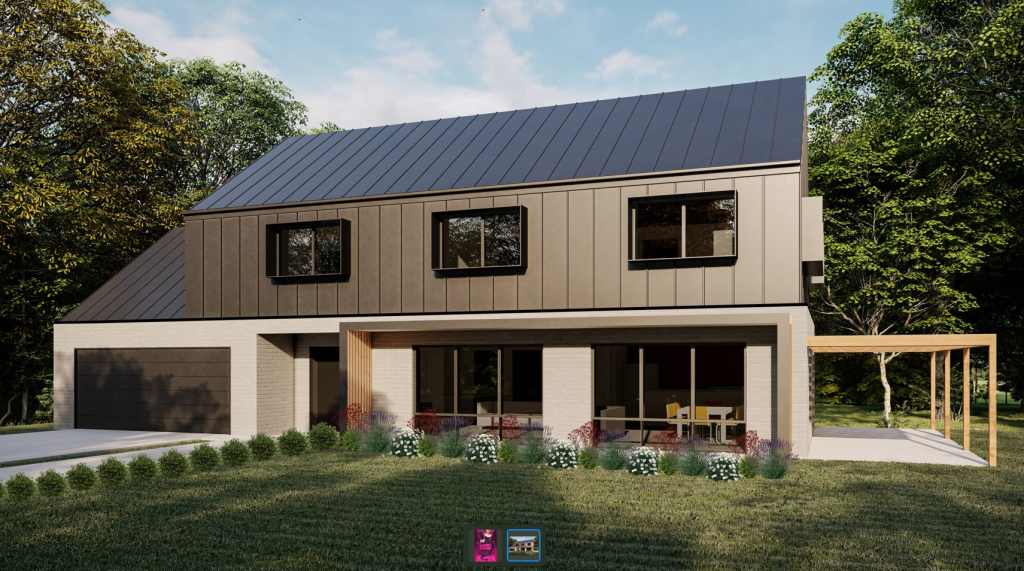In Australia, the Nationwide House Energy Rating Scheme (NatHERS) evaluates the thermal performance of residential buildings, assigning a star rating from 0 to 10 based on energy efficiency. As of recent updates, the National Construction Code mandates a minimum 7-star rating for new homes, reflecting a commitment to enhanced energy efficiency standards. For homeowners in New South Wales (NSW) and Sydney, understanding and implementing strategies to achieve this rating is essential for reducing energy consumption, lowering utility bills, and contributing to environmental sustainability.

Understanding the 7-Star NatHERS Rating
A 7-star rating signifies a high level of thermal efficiency, indicating that a home requires minimal artificial heating and cooling to maintain comfortable indoor temperatures. Achieving this rating involves optimizing various design elements and construction practices to enhance the building’s overall energy performance.
Key Steps to Achieve a 7-Star Rating
1. Engage a NatHERS Assessor Early
Involving an accredited NatHERS assessor during the initial design phase is crucial. These professionals provide valuable insights into design choices that impact energy efficiency, helping to identify cost-effective strategies to meet the 7-star requirement. Early collaboration ensures that energy efficiency considerations are integrated seamlessly into the building plan.
2. Optimize Building Orientation
Proper orientation enhances natural heating and cooling:
- Northern Orientation: Position living areas to face north to maximize exposure to winter sunlight, reducing heating needs.
- Shading Solutions: Implement eaves, pergolas, or deciduous plantings to shield windows from excessive summer sun while allowing winter sun to penetrate.
Effective orientation leverages the sun’s path to improve thermal comfort naturally.
3. Enhance Insulation and Sealing
High-quality insulation and airtight construction are vital:
- Insulation: Install appropriate insulation in walls, roofs, and floors to minimize heat transfer.
- Sealing: Seal gaps, cracks, and openings to prevent air leaks, enhancing the effectiveness of insulation and maintaining consistent indoor temperatures.
These measures contribute significantly to reducing the need for mechanical heating and cooling.
4. Select High-Performance Windows and Glazing
Windows play a critical role in a home’s thermal performance:
- Double or Triple Glazing: Use windows with multiple panes to reduce heat loss in winter and heat gain in summer.
- Low-Emissivity (Low-E) Glass: Incorporate Low-E coatings to reflect infrared heat, improving insulation properties.
- Thermally Broken Frames: Choose window frames designed to minimize heat transfer, enhancing overall window performance.
Proper window selection and placement can significantly impact energy efficiency.
5. Incorporate Thermal Mass
Utilizing materials that absorb and release heat helps regulate indoor temperatures:
- Materials: Use dense materials like concrete, brick, or stone in floors and internal walls to store heat during the day and release it at night.
- Exposure: Ensure thermal mass elements are exposed to direct sunlight in winter and shaded in summer for optimal performance.
Thermal mass contributes to a more stable and comfortable indoor environment.
6. Implement Energy-Efficient Lighting and Appliances
Beyond the building envelope, selecting efficient systems reduces overall energy consumption:
- LED Lighting: Install LED fixtures, which use less energy and have longer lifespans than traditional bulbs.
- Efficient Appliances: Choose appliances with high energy star ratings to ensure lower energy usage.
These choices complement structural energy efficiency measures.
7. Consider Renewable Energy Integration
Incorporating renewable energy sources can further enhance a home’s sustainability:
- Solar Panels: Install photovoltaic systems to generate electricity, reducing reliance on the grid.
- Solar Hot Water Systems: Utilize solar energy for water heating, decreasing energy consumption.
Renewable energy systems contribute to achieving and surpassing the 7-star rating by offsetting energy use.

Considerations for NSW and Sydney Homeowners
Given Sydney’s temperate climate, specific strategies can be particularly effective:
- Ventilation: Design for cross-ventilation to take advantage of prevailing breezes, reducing cooling needs.
- Shading Devices: Use external shading to protect against intense summer sun, especially on western facades.
- Roof Colour: Opt for lighter roof colours to reflect heat, keeping the home cooler during hot months.
Tailoring design choices to the local climate enhances the effectiveness of energy efficiency measures.
Benefits of Achieving a 7-Star Rating
Pursuing a 7-star NatHERS rating offers multiple advantages:
- Reduced Energy Bills: Lower energy consumption translates to cost savings over time.
- Enhanced Comfort: Improved thermal performance leads to more consistent indoor temperatures year-round.
- Environmental Impact: Decreased reliance on fossil fuels reduces greenhouse gas emissions, contributing to environmental sustainability.
- Increased Property Value: Energy-efficient homes are increasingly desirable, potentially enhancing resale value.
Investing in energy efficiency yields both immediate and long-term rewards.

Conclusion
Achieving a 7-star NatHERS rating involves a holistic approach, integrating thoughtful design, quality construction, and efficient systems.
